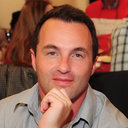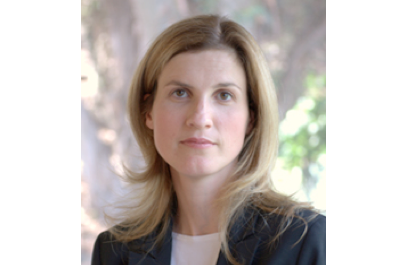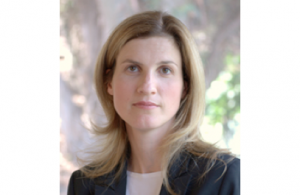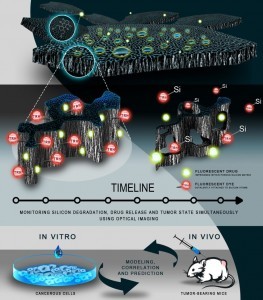
Alex M. Szpilman
Assistant Professor at Technion Israel Institute of Technology
LINKS

 Summary
Summary
Specialties:
Organic chemistry
Organic synthesis
Reaction design and development
Physical organic chemistry
Chemical biology
Total synthesis of natural products
Mechanism of action of biologically active molecules
Asymmetric catalysis
Organic chemistry
Organic synthesis
Reaction design and development
Physical organic chemistry
Chemical biology
Total synthesis of natural products
Mechanism of action of biologically active molecules
Asymmetric catalysis

Experience
Assistant Professor
Technion Israel Institute of Technology
postdoc
ETH Zurich
Education
Weizmann Institute of Science
Doctor of Philosophy (Ph.D.)
Frederiksborg Gymnasium

Publications
Water Soluble Amphotericin B-PEG Conjugates with Low Toxicity and Potent In Vivo Efficacy(Link)
Journal of Medicinal Chemistry
January 14, 2016
Systemic fungal infections are an increasingly prevalent health problem, especially among immunocompromised patients. Antifungal drug development lags far behind in comparison to other types of antimicrobial drugs. Current commercially available antifungals are limited by their insufficient potency, side effects, drug–drug interactions, developing drug-resistance, and narrow formulation options....more
Design Concept for α-Hydrogen Substituted Nitroxides(Link)
Nature Communications
February 6, 2015
Stable nitroxides (nitroxyl radicals) have many essential and unique applications in chemistry,
biology and medicine. However, the factors influencing their stability are still under
investigation, and this hinders the design and development of new nitroxides. Nitroxides with
tertiary alkyl groups are generally stable but obviously highly encumbered. In contrast,
a-hydrogen-substituted...more
biology and medicine. However, the factors influencing their stability are still under
investigation, and this hinders the design and development of new nitroxides. Nitroxides with
tertiary alkyl groups are generally stable but obviously highly encumbered. In contrast,
a-hydrogen-substituted...more
Synthesis and stability of cyclic α-hydrogen nitroxides(Link)
Organic & Biomolecular Chemistry
August 20, 2015
Selected as a HOT paper:
Nitroxides (nitroxyl radicals) hold a unique place in science due to their stable radical nature. We have recently reported the first design concept providing a general solution to the problem of designing and preparing monocyclic α-hydrogen nitroxides. The initial studies were limited to aryl derivatives. We now report a wider study showing that alkyl substituents may...more
Nitroxides (nitroxyl radicals) hold a unique place in science due to their stable radical nature. We have recently reported the first design concept providing a general solution to the problem of designing and preparing monocyclic α-hydrogen nitroxides. The initial studies were limited to aryl derivatives. We now report a wider study showing that alkyl substituents may...more
Catalytic Aerobic Oxidation of Alcohols using Recoverable IAPNO α-Hydrogen Nitroxyl Radicals(Link)
ChemCatChem
March 12, 2015
α-Hydrogen-substituted nitroxyl radicals are of considerable interest as catalysts for oxidation and polymerization, but are usually inherently unstable. We report herein the catalytic activity of a new family of stable iso-azaphenalene (IAPNO) α-hydrogen nitroxyl radicals in the copper/bipyridine/N-methylimidazole co-catalyzed aerobic oxidation of alcohols. The nitroxyl radical Mes/TIPSO-IAPNO (...more
Oxidative Asymmetric Umpolung Alkylation of Evans’ β-Keto Imides by Dialkylzinc Nucleophiles(Link)
Organic and Biomolecular Chemistry
January 12, 2015
Seleected as a HOT paper:
Umpolung alkylation of Evans’ auxiliary substituted β-ketoimides affords the diastereomerically pure products in yields ranging from 40-80%. The reaction itself proceeds with diastereoselectivities between 3:1 and 18:1. Dialkylzinc serves as the nucleophile and umpolung of the β-keto-imide enolate is achieved by the action of Koser’s reagent.
Umpolung alkylation of Evans’ auxiliary substituted β-ketoimides affords the diastereomerically pure products in yields ranging from 40-80%. The reaction itself proceeds with diastereoselectivities between 3:1 and 18:1. Dialkylzinc serves as the nucleophile and umpolung of the β-keto-imide enolate is achieved by the action of Koser’s reagent.
Oxidative Umpolung α-Alkylation of Ketones(Link)
Organic Letters
January 6, 2015
We disclose a hypervalent iodine mediated α-alkylative umpolung reaction of carbonyl compounds with dialkylzinc as the alkyl source. The reaction is applicable to all common classes of ketones including 1,3-dicarbonyl compounds and regular ketones via their lithium enolates. The α-alkylated carbonyl products are formed in up to 93% yield. An ionic mechanism is inferred based on meticulous analysis...more
Synthetic and Mechanistic Study of the Catalytic Enantioselective Preparation of Primary β-Aminoketones from Enones and a Fluorinated Gabriel Reagent(Link)
ACS Catalysis
November 19, 2014
Salen μ-oxo complex of aluminum catalyzes the asymmetric 1,4-addition of the novel ammonia equivalent 3,4,5,6-tetrafluorophthalimide to unsaturated ketones. All of the reagents are inexpensive and are readily available. The products are formed in up to 89% yield and up to 96% ee. The tetrafluorophthalimide group is removed under mild chemoselective conditions and in high yields to afford the free...more
Probing the Biology of Natural Products: Molecular Editing by Diverted Total Synthesis(Link)
Angewandte Chemie
November 2010
The systematic modification of natural products through diverted total synthesis is a powerful concept for the systematic modification of natural products with the aim of studying mechanistic aspects of their biological activity. This concept offers far-reaching opportunities for discovery at the interface of biology and chemistry. It is underpinned by the power of chemical synthesis, which...more
Publications
Water Soluble Amphotericin B-PEG Conjugates with Low Toxicity and Potent In Vivo Efficacy(Link)
Journal of Medicinal Chemistry
January 14, 2016
Systemic fungal infections are an increasingly prevalent health problem, especially among immunocompromised patients. Antifungal drug development lags far behind in comparison to other types of antimicrobial drugs. Current commercially available antifungals are limited by their insufficient potency, side effects, drug–drug interactions, developing drug-resistance, and narrow formulation options....more
Design Concept for α-Hydrogen Substituted Nitroxides(Link)
Nature Communications
February 6, 2015
Stable nitroxides (nitroxyl radicals) have many essential and unique applications in chemistry,
biology and medicine. However, the factors influencing their stability are still under
investigation, and this hinders the design and development of new nitroxides. Nitroxides with
tertiary alkyl groups are generally stable but obviously highly encumbered. In contrast,
a-hydrogen-substituted...more
biology and medicine. However, the factors influencing their stability are still under
investigation, and this hinders the design and development of new nitroxides. Nitroxides with
tertiary alkyl groups are generally stable but obviously highly encumbered. In contrast,
a-hydrogen-substituted...more
Synthesis and stability of cyclic α-hydrogen nitroxides(Link)
Organic & Biomolecular Chemistry
August 20, 2015
Selected as a HOT paper:
Nitroxides (nitroxyl radicals) hold a unique place in science due to their stable radical nature. We have recently reported the first design concept providing a general solution to the problem of designing and preparing monocyclic α-hydrogen nitroxides. The initial studies were limited to aryl derivatives. We now report a wider study showing that alkyl substituents may...more
Nitroxides (nitroxyl radicals) hold a unique place in science due to their stable radical nature. We have recently reported the first design concept providing a general solution to the problem of designing and preparing monocyclic α-hydrogen nitroxides. The initial studies were limited to aryl derivatives. We now report a wider study showing that alkyl substituents may...more
Catalytic Aerobic Oxidation of Alcohols using Recoverable IAPNO α-Hydrogen Nitroxyl Radicals(Link)
ChemCatChem
March 12, 2015
α-Hydrogen-substituted nitroxyl radicals are of considerable interest as catalysts for oxidation and polymerization, but are usually inherently unstable. We report herein the catalytic activity of a new family of stable iso-azaphenalene (IAPNO) α-hydrogen nitroxyl radicals in the copper/bipyridine/N-methylimidazole co-catalyzed aerobic oxidation of alcohols. The nitroxyl radical Mes/TIPSO-IAPNO (...more
Oxidative Asymmetric Umpolung Alkylation of Evans’ β-Keto Imides by Dialkylzinc Nucleophiles(Link)
Organic and Biomolecular Chemistry
January 12, 2015
Seleected as a HOT paper:
Umpolung alkylation of Evans’ auxiliary substituted β-ketoimides affords the diastereomerically pure products in yields ranging from 40-80%. The reaction itself proceeds with diastereoselectivities between 3:1 and 18:1. Dialkylzinc serves as the nucleophile and umpolung of the β-keto-imide enolate is achieved by the action of Koser’s reagent.
Umpolung alkylation of Evans’ auxiliary substituted β-ketoimides affords the diastereomerically pure products in yields ranging from 40-80%. The reaction itself proceeds with diastereoselectivities between 3:1 and 18:1. Dialkylzinc serves as the nucleophile and umpolung of the β-keto-imide enolate is achieved by the action of Koser’s reagent.
Oxidative Umpolung α-Alkylation of Ketones(Link)
Organic Letters
January 6, 2015
We disclose a hypervalent iodine mediated α-alkylative umpolung reaction of carbonyl compounds with dialkylzinc as the alkyl source. The reaction is applicable to all common classes of ketones including 1,3-dicarbonyl compounds and regular ketones via their lithium enolates. The α-alkylated carbonyl products are formed in up to 93% yield. An ionic mechanism is inferred based on meticulous analysis...more
Synthetic and Mechanistic Study of the Catalytic Enantioselective Preparation of Primary β-Aminoketones from Enones and a Fluorinated Gabriel Reagent(Link)
ACS Catalysis
November 19, 2014
Salen μ-oxo complex of aluminum catalyzes the asymmetric 1,4-addition of the novel ammonia equivalent 3,4,5,6-tetrafluorophthalimide to unsaturated ketones. All of the reagents are inexpensive and are readily available. The products are formed in up to 89% yield and up to 96% ee. The tetrafluorophthalimide group is removed under mild chemoselective conditions and in high yields to afford the free...more
Probing the Biology of Natural Products: Molecular Editing by Diverted Total Synthesis(Link)
Angewandte Chemie
November 2010
The systematic modification of natural products through diverted total synthesis is a powerful concept for the systematic modification of natural products with the aim of studying mechanistic aspects of their biological activity. This concept offers far-reaching opportunities for discovery at the interface of biology and chemistry. It is underpinned by the power of chemical synthesis, which...more

Alex M. Szpilman
Assistant ProfessorPost doc: ETH Zurich, Swiss Federal Institute of Technology with Prof. Erick M. Carreira
Ph.D: Weizmann Institute of Science, 2003, with Prof. Mario D. Bachi
Room Number: 554
Phone: +972-4-829-5953
Fax: +972-4-829-5703
szpilman@tx.technion.ac.il
Group/Personal Website
Phone: +972-4-829-5953
Fax: +972-4-829-5703
szpilman@tx.technion.ac.il
Group/Personal Website
Research Interests
New Reactions and Methods Asymmetric Synthesis and Catalysis Total Synthesis of Natural Products Cascade reactions for rapid increase in molecular complexity Probing the Molecular Mechanism of Action of Natural Products
Research Abstract
Organic Synthesis is the Art and Science of preparing complex functional molecules from simple starting materials. Thus, it is a technology that is essential for a wide range of other fields and of prime importance in both academia and industry. The primary focus of the Szpilman group is the development of new ways of forging chemical bonds. Lessons learned from supra-molecular chemistry, structural biology and chemistry serve as the inspiration for solving synthetic problems of general importance.
Our research interests include:a) Designing structurally novel and efficient catalysts for chemical processes. We are especially interested in developing chiral catalysts for asymmetric catalysis. Asymmetric catalysis is important e.g. in drug production.
b) Discovering and inventing, efficient and environmentally friendly chemical reactions that allow preparing important materials with a minimum of waste generation and energy consumption.
c) Innovating safe, environmentally friendly ways of storing and delivering energy.
d) Creative step-economical ways to synthesize natural products. Targets are chosen, which possess intriguing structures and biological properties. Bottom up chemical synthesis of biologically active molecules represents a unique and powerful tool to address biological mechanisms relevant to medicine.
Selected Publications
- “Design Concept for α-Hydrogen Substituted Nitroxides” Michal Amar, Sukanta Bar, Mark A. Iron, Hila Toledo, Boris Tumanskii, Linda J. W. Shimon, Mark Botoshansky, Natalia Fridman, and Alex M. Szpilman Nature Communications,2015, 6, 6070
- “Oxidative Umpolung α-Alkylation of Ketones” O. Svetlana Shneider, Evgeni Pisarevsky, Peter Fristrup, and Alex M. Szpilman Organic Letters, 2015, 17, 282-285
- “Synthetic and Mechanistic study of the Catalytic Enantioselective Synthesis of primary β-Amino Ketones from Enones and a Fluorinated Gabriel Reagent”Shlomit Avidan-Shlomovich, Harisadhan Ghosh, and Alex M. Szpilman* ACS Catalysis, 2015, 5, 336-342
- “Direct Organocatalytic Oxidation of Aldehydes to Mixed Anhydrides” Hila Toledo, Evgeni Piseravsky, Adi Abramovich, and Alex M. Szpilman , Chem. Commun., 2013, 49, 4367-4369
- “Probing the Biology of Natural Products: Molecular Editing by Diverted Total Synthesis” Alex M. Szpilman and Erick M. Carreira, Angewandte Chemie International Edition, 2010, 49, 9592–9628
Awards
2010 Chaya Career Advancement Chair2004 Carlsberg Foundation Postdoctoral Fellowship
2003 Carlsberg Foundation Postdoctoral Fellowship
Group Members
Shlomit Avidan
Irit Cohen
Michal Amar
Orel Svetlana Shneider
Shimon Maximenko
Ravishashidha Vavilala
Sukanta Bar
Tom Targel
Hila Toledo

Szpilman Group March 2013
Postdoctoral Fellows
| Dr. Jayprakash Kumar, Schulich Postdoctoral FellowPh.D.: Indian Institute of Chemical Technology (IICT) Hyderabad |
Graduate Students
 | ||
| Shlomy Arava, M.Sc.M.Sc.: Bar Ilan University B.Sc.: Bar Ilan University Shlomy joined the group for his Ph.D. March 2015 | Hila Toledo, M. Sc.M.Sc.: Technion B.Sc.: Technion Hila joined the group in 2010 for her Masters and is now studying towards her Ph.D. | Shimon Maksymenko, M.Sc. M.Sc.: Technion B. Sc.: Technion Shimon joined the group for his Ph.D. August 2014. |
//////
 Summary
Summary
















